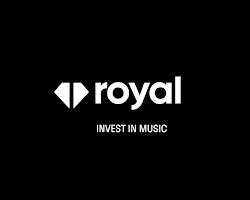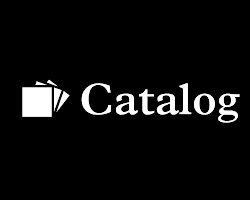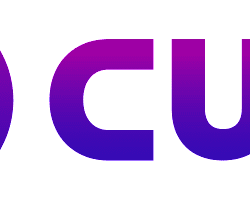Top 10 NFT Projects Driving Innovation In Music

NFT, short for Non-Fungible Token, is a digital asset that represents ownership or proof of authenticity of a unique item or piece of content, using blockchain technology. Unlike cryptocurrencies such as Bitcoin or Ethereum, which are fungible and can be exchanged on a like-for-like basis, NFT projects are unique and cannot be exchanged on a one-to-one basis.
At its core, an NFT is a digital certificate of ownership or proof of authenticity that is stored on a blockchain, typically the Ethereum blockchain, using smart contracts. The use of blockchain technology ensures transparency, immutability, and security, making it impossible to forge or tamper with the ownership records associated with an NFT.
NFTs can represent a wide range of digital and physical assets, including digital art, music, videos, virtual real estate, domain names, collectibles, and more. These assets are tokenized, meaning they are represented by a unique token or unit on the blockchain. Each NFT has a unique identifier and a set of metadata that provides information about the asset it represents.
One of the key features of NFTs is their ability to establish provable scarcity and ownership. Due to the nature of blockchain technology, each NFT can be traced back to its original creator or issuer and can be easily verified. This provides creators and artists with a new way to monetize their work, as they can sell their digital assets directly to collectors without the need for intermediaries.
The ownership and transaction history of NFTs can be publicly viewed on the blockchain, allowing for transparency and establishing a verifiable chain of custody. This has led to a surge in popularity and interest in the NFT market, with artists, musicians, celebrities, and brands embracing the technology to sell their unique creations and engage with their fans in new and innovative ways.
NFTs are typically bought, sold, and traded on specialized online platforms called NFT marketplaces. These platforms act as intermediaries, facilitating the buying and selling of NFTs, often through auction formats or direct sales. Some popular NFT marketplaces include OpenSea, Rarible, SuperRare, and NBA Top Shot.
Critics of NFTs raise concerns about the environmental impact of blockchain technology, particularly due to the energy consumption associated with transactions on the Ethereum network. The high energy consumption is attributed to the process of mining and validating transactions on the blockchain. Efforts are being made to develop more energy-efficient blockchain solutions to mitigate these concerns.
In conclusion, NFTs have gained significant attention and popularity as a new form of digital ownership and expression. They have revolutionized the way digital assets are bought, sold, and collected, providing artists and creators with new opportunities for monetization and engagement with their audience. However, as with any emerging technology, the long-term impact and sustainability of NFTs are subjects of ongoing discussion and exploration.
Also read: All About Celebrities Promoting The New Hype “NFT Market
Importance of NFTs for the economy
NFTs (Non-Fungible Tokens) have emerged as a significant development in the digital economy, bringing about new possibilities and impacts on various sectors. Here are some key aspects highlighting the importance of NFTs for the economy:
1. Monetization of Digital Assets: NFTs provide a means for creators, artists, musicians, and other content creators to monetize their digital assets in a more direct and efficient manner. Previously, digital content could be easily copied and shared without providing proper compensation to the creators. NFTs enable creators to tokenize their work, establish ownership, and sell it directly to buyers, thereby unlocking new revenue streams and empowering content creators.
2. Authenticity and Provenance: NFTs offer a unique solution to prove the authenticity and provenance of digital assets. By utilizing blockchain technology, NFTs create an immutable and transparent record of ownership, transaction history, and metadata associated with each asset. This has significant implications, particularly in combating digital piracy, forgery, and plagiarism. Buyers can have confidence in the legitimacy and uniqueness of the assets they purchase, enhancing trust and value in the digital marketplace.
3. Empowering Artists and Creators: NFTs have democratized the art and creative industry by providing artists with direct access to a global market. Traditionally, artists relied on galleries, agents, or intermediaries to showcase and sell their work. NFTs eliminate these barriers by enabling artists to connect directly with buyers, retain more control over their creations, and receive a larger share of the profits. This empowerment has led to increased opportunities, recognition, and financial rewards for artists and creators.
4. Residual Income and Royalties: NFTs have introduced the concept of royalties and smart contracts in the digital realm. With smart contracts embedded in NFTs, creators can earn royalties every time their assets are resold. This mechanism ensures ongoing revenue streams for artists, even after the initial sale. This concept of residual income benefits both established artists and emerging talents, providing long-term sustainability and incentivizing the creation of valuable digital content.
5. Diversification of Investment Opportunities: NFTs have opened up new investment opportunities, allowing individuals to invest in digital assets and collectibles. Investors can purchase NFTs as speculative investments, anticipating their future value appreciation. Additionally, NFTs representing unique assets such as virtual real estate, virtual items in video games, or digital collectibles, offer investors the chance to participate in emerging markets with high growth potential.
6. Innovation and New Business Models: NFTs have sparked innovation and the emergence of new business models across various industries. Companies are exploring the integration of NFTs into gaming, virtual reality, fashion, music, sports, and more. NFTs enable the creation of virtual economies, where users can buy, sell, and trade digital assets within specific platforms or ecosystems. This opens up avenues for immersive experiences, brand collaborations, and unique interactions, driving economic growth and technological advancement.
7. Cultural Preservation and Ownership: NFTs have the potential to preserve and protect cultural heritage and intellectual property. By tokenizing and recording ownership of digital artifacts, historical items, or cultural assets, NFTs contribute to the preservation of cultural history and provide a mechanism for proper attribution and compensation to the rightful owners. This can be particularly impactful for indigenous communities, artists from underrepresented backgrounds, and marginalized creators.
While NFTs offer exciting opportunities, it is essential to navigate potential challenges, such as environmental concerns related to blockchain energy consumption and the need to address issues of inclusivity, accessibility, and market volatility. Nonetheless, NFTs are transforming the economy by revolutionizing the ownership and value creation of digital assets, empowering creators, and introducing new investment landscapes.
Also read: Top 10 NFTs Use Cases To Make Real World Experiences Richer
Top 10 NFT Projects Driving Innovation in Music
Top 10 NFT Projects Driving Innovation in Music
Non-fungible tokens (NFTs) are revolutionizing the music industry, providing new ways for artists to connect with fans, sell their work, and build communities. Here are 10 of the top NFT projects driving innovation in music:
1. Royal
Royal is a platform that allows fans to buy shares in songs and albums. This gives fans a stake in the artist’s success and allows them to earn royalties on future streams and sales.

2. Sound XYZ
Sound XYZ is a marketplace for buying and selling music NFTs. Artists can sell their music as NFTs, which gives fans the opportunity to own a unique piece of the artist’s work.
3. Catalog
Catalog is a platform that allows artists to sell their music catalogs as NFTs. This gives artists a way to cash in on their back catalogs and provides fans with a way to own a piece of their favorite artist’s history. 
4. Audioglyphs
Audioglyphs are NFTs that represent unique audio recordings. These recordings can be anything from a song to a spoken word piece to a soundscape. Audioglyphs allow fans to own a unique piece of audio art.
5. OneOf
OneOf is a platform that focuses on selling music NFTs from established artists. OneOf has partnered with artists such as Whitney Houston, John Legend, and Lindsey Stirling.

6. Blockparty
Blockparty is a marketplace for buying and selling music NFTs. Blockparty has a focus on supporting independent artists.
7. Curio
Curio is a platform that allows artists to sell their music and art as NFTs. Curio also offers a membership program that gives fans access to exclusive content and experiences.

8. YellowHeart
YellowHeart is a platform that allows artists to sell tickets to live events as NFTs. This gives fans a way to own a unique piece of the event and allows artists to better connect with their fans.
9. Opulous
Opulous is a platform that allows artists to raise money by issuing NFTs that represent fractional ownership of their music. This gives fans a way to invest in their favorite artists and earn royalties on future streams and sales. 
10. NFT Music
NFT Music is a platform that allows artists to sell their music as NFTs. NFT Music also offers a royalty-free music library that artists can use to create their own NFTs.
These are just a few of the many NFT projects driving innovation in music. As the NFT space continues to grow, we can expect to see even more innovative ways for artists to connect with fans and sell their work.
🪢 13/16
• NFT
The next active growth of the NFT market will be due to the movement of brands and music industry towards NFT.
In addition, we see the evolution of the technology itself: new NFT standards (ERC-6551, Ordinals, BRC-721e) , the emergence of the NFT loan market. pic.twitter.com/4F3LReAE7n— thug🗡️ (@996thug) July 16, 2023
Risks associated with NFTs
While NFTs (Non-Fungible Tokens) have gained significant popularity and brought about numerous opportunities, it is important to be aware of the risks and challenges associated with this emerging technology. Here are some key risks to consider:
1. Market Volatility: The NFT market is highly volatile and speculative. The value of NFTs can fluctuate dramatically, with some assets experiencing rapid price appreciation or depreciation. This volatility introduces the risk of financial losses for buyers and investors who may purchase NFTs at inflated prices, only to see their value diminish over time. It is crucial to exercise caution and conduct thorough research before making any investment in NFTs.
2. Lack of Regulation and Consumer Protection: The NFT market is currently unregulated in many jurisdictions. This absence of clear regulations and oversight poses risks for buyers and sellers. It may lead to fraudulent activities, scams, and the potential for manipulation of prices. Additionally, in case of disputes or issues related to ownership or authenticity, there may be limited legal recourse available to individuals. It is important for participants in the NFT market to exercise due diligence and engage with reputable platforms and sellers.
3. Counterfeit and Plagiarism: While NFTs aim to establish authenticity and provenance, there have been instances where counterfeit or plagiarized NFTs have emerged. Despite the blockchain’s transparent nature, the underlying digital assets associated with an NFT can be copied or replicated, leading to the sale of fraudulent or unauthorized versions. Buyers must be cautious and verify the credibility of the creators and the assets they are purchasing to mitigate the risk of acquiring counterfeit NFTs.
4. Environmental Impact: NFTs, particularly those built on the Ethereum blockchain, have faced criticism due to their significant energy consumption. The process of minting, buying, and selling NFTs requires substantial computational power, contributing to carbon emissions and environmental degradation. As the popularity of NFTs grows, it becomes crucial to address the environmental impact of blockchain technology and explore more sustainable alternatives.
5. Liquidity and Exit Strategy: While NFTs can be bought and sold on various marketplaces, there is a risk of illiquidity for certain assets. Some NFTs may have limited demand, making it difficult to find buyers when attempting to sell. Additionally, the process of converting NFTs back into fiat currency (traditional currency) can be challenging, with potential limitations on liquidity and a lack of established market infrastructure. Buyers should carefully consider their exit strategy and the potential challenges associated with selling their NFTs if desired.
6. Overvaluation and Hype-driven Market: The NFT market has witnessed instances of speculative hype and overvaluation. High-profile sales and celebrity endorsements have sometimes led to inflated prices, creating a sense of urgency and FOMO (Fear of Missing Out) among buyers. This speculative behavior can result in market bubbles and irrational pricing, which may not be sustainable in the long term. Investors should exercise caution and ensure they are making informed decisions based on the intrinsic value of the asset, rather than being influenced solely by market trends or celebrity involvement.
7. Inclusivity and Accessibility: NFTs have faced criticism for exacerbating wealth inequalities and exclusivity. High transaction fees, gas costs, and the requirement for cryptocurrency holdings can create barriers to entry for individuals with limited financial resources. Additionally, the technological complexity associated with buying, selling, and storing NFTs may deter or exclude certain demographics. Addressing these issues is crucial to ensure a more inclusive and accessible NFT ecosystem.
It is important to understand and evaluate these risks when engaging with NFTs. Educating oneself, conducting thorough research, and exercising caution are essential to navigate the evolving landscape of NFTs and make informed decisions while participating in this emerging market.
Future of NFTs
The future of NFTs (Non-Fungible Tokens) holds immense potential for further growth, innovation, and impact across various industries. Here are some key aspects that highlight the potential future developments and trends in the NFT space:
1. Expansion into New Industries: While NFTs have gained significant traction in the art and collectibles space, they are expected to expand into new industries. Sectors such as gaming, music, fashion, sports, virtual reality, and real estate are likely to integrate NFTs into their business models. This expansion will create unique opportunities for creators, consumers, and investors, resulting in the emergence of vibrant virtual economies and new digital experiences.
2. Enhanced Utility and Interoperability: Future iterations of NFTs are expected to possess enhanced utility and interoperability. NFTs may evolve to become more programmable and dynamic, enabling them to interact with other NFTs, smart contracts, decentralized applications (DApps), and even the physical world. This interoperability will enable the creation of complex ecosystems and enable NFTs to represent multi-dimensional assets or carry out specific functions within decentralized networks.
3. Integration with Decentralized Finance (DeFi): NFTs are likely to integrate with the emerging field of decentralized finance (DeFi). This integration could enable NFT holders to utilize their assets as collateral for loans, fractionalize ownership, and create new financial instruments. DeFi-powered NFT platforms may facilitate decentralized trading, lending, and other financial activities, enhancing liquidity, and expanding the utility of NFTs.
4. Sustainability and Environmental Considerations: As the environmental impact of blockchain technology gains attention, efforts are being made to develop more sustainable NFT solutions. Layer-2 scaling solutions and alternative blockchains with lower energy consumption are being explored to address these concerns. The future of NFTs will likely involve a focus on sustainability and environmental responsibility to mitigate the carbon footprint associated with the technology.
5. Integration of AI and Virtual Reality (VR): The combination of NFTs with emerging technologies such as artificial intelligence (AI) and virtual reality (VR) holds great potential. AI algorithms could be used to generate or enhance NFT-based art, music, or other digital assets. Virtual reality platforms could provide immersive experiences where users can showcase and interact with their NFT collections or virtual assets, further enhancing the value and utility of NFTs.
6. Governance and Standards: As the NFT ecosystem matures, the development of governance frameworks and industry standards will likely play a crucial role. Establishing best practices, guidelines, and standards for issuing, trading, and managing NFTs will enhance transparency, protect consumers, and foster trust within the ecosystem. Organizations and industry bodies are already working on initiatives to develop these frameworks and ensure responsible growth of the NFT market.
7. Mainstream Adoption and Integration: The future of NFTs involves increasing mainstream adoption and integration into everyday life. As more people become familiar with the concept of digital ownership and the benefits of NFTs, we may witness widespread adoption across demographics and industries. NFTs could become a standard part of digital content consumption, digital identity, and ownership verification, transforming various aspects of our lives.
It is important to note that the future of NFTs will be shaped by technological advancements, regulatory developments, market dynamics, and the collective actions of participants in the ecosystem. While the potential for growth and innovation is significant, challenges such as scalability, sustainability, and inclusivity must be addressed to ensure the long-term success and positive impact of NFTs.



























































